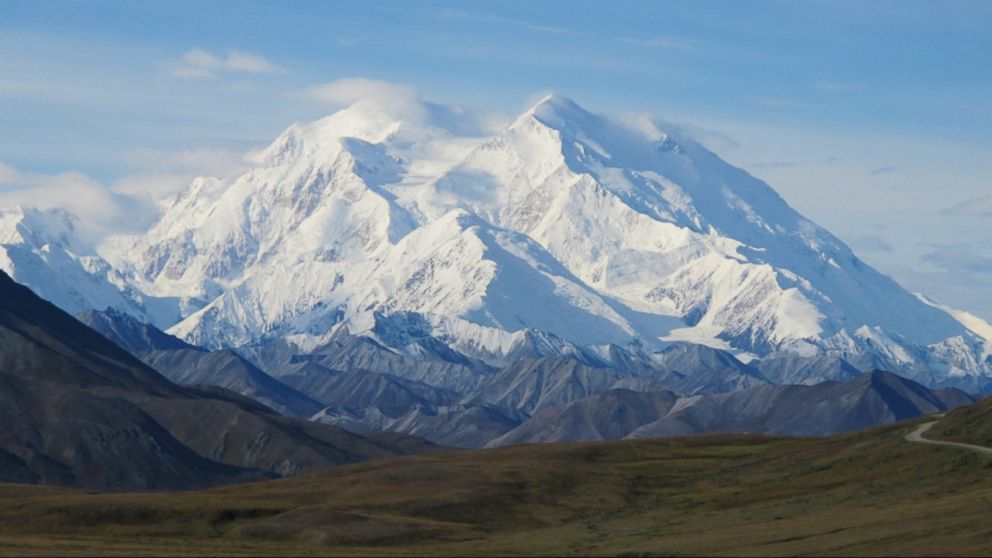3 Issues Obama Should Discuss, Besides Climate Change, as He Heads to the Arctic
— -- President Obama heads north today to highlight the issue of climate change against the backdrop of receding glaciers in Alaska.
While visiting the 49th state, he plans to tour Seward’s Exit glacier in Kenai Fjords National Park, which has receded more than 1.25 miles since records have been kept, visit fishing villages and head to the Arctic Circle, all to highlight the dire need for action on climate change. The White House says the Arctic has warmed twice as fast as the world as a whole.
And while the issue of climate change is important, here are three other issues the president may want to address on his trip north:
1. Who Owns the Arctic?
While technically no one country can “own” the arctic, the United Nations Convention on the Law of the Sea allows each country to submit a claim that their continental shelf extends north, thereby granting them rights beyond their borders.
In 2007, Russia planted a titanium flag on the floor of the Arctic Ocean, a move that was mostly symbolic, but has since followed with a formal claim to the United Nations. The Russians first submitted their claim in 2002, but the U.N. sent it back for lacking evidence.
The Russian foreign ministry said in April that it is claiming 463,000 square miles of the Arctic Ocean shelf extending more than 350 nautical miles from the shore, citing “ample scientific data collected in years of Arctic research are used to back the Russian claim,” the arguments to the UN states, according to the Associated Press.
Meanwhile, the U.S. isn’t even able to submit a claim because Congress has yet to accede the “Law of the Sea.”
Ownership will be important as the ice thaws. The U.S. Geological Survey estimates underneath the Arctic ice lies approximately 13 percent of the Earth’s oil and 30 percent of the Earth’s natural gas.
2. Military Readiness in the North
While Russia is submitting claims of ownership, they are also running multiple military exercises with upwards of 50 ships and submarines and thousands of servicemen.
The U.S. just completed a six-month Arctic deployment with the U.S.S. Seawolf submarine, but the U.S. military has no nuclear-powered ice-breakers that are capable of operating in the Arctic.
Chief of Naval Operations Adm. Jonathan Greenert said in March the U.S. needs better prepare for Arctic activity.
"We need to look at it deliberately and understand it," he told Military.com at the time. "We need to get industry up there and study the place and find out when it is going to melt. What are the sea lines that will open? Are there territorial disputes? Are there threats? Russia is increasing their military presence, which sort of makes sense. Also, how do we survive up there with our ships our aircraft and our people?"
While Adm. Paul Zukunft, commandant of the U.S. Coast Guard, told NPR that having just a single, old heavy icebreaker at a time when other countries are jockeying for position in the Arctic weighs heavily on him.
"Russia has approximately 27 ocean-going icebreakers. ... Some of those are nuclear-powered," he told NPR in June. "And so we're not even in the same league as Russia right now."
Lt. Commander Nicole Schwegman, a U.S. Navy spokesperson, told ABC News that all U.S. Navy fast-attack and ballistic missile submarines can operate under the Arctic. And most can break through the ice, but confirmed the military’s oiler ships can only operate in 1 to 2 feet of ice and anything more than 3.3 feet they need an icebreaker. Currently the Coast Guard has two icebreakers, but only one is in service.
And it’s not just Russia upping its Arctic military strategy; Canada has also put resources into its northern navy.
3. New Shipping Lanes Opening Up as Ice Thaws
While the thawing ice is proving worrisome for Arctic animals and climate change, it has provided a shortcut from Europe to Asia. Shipping lanes have opened up. The Alaska Natural Gas Transportation Projects estimate a trip from Norway to Japan that saves 10 days compared to using the Suez Canal could save roughly $1 million per trip.
While Japan’s transportation ministry logged only 71 ships crossing the northern route in 2013, according to the Wall Street Journal, the route is only open during the summer months when less ice impedes the journey.
While other countries are jockeying for a position in the Arctic, the United States has lagged behind.
“We have been for some time clamoring about our nation’s lack of capacity to sustain any meaningful presence in the Arctic,” Adm. Paul F. Zukunft, the Coast Guard’s commandant, told the New York Times.
The Department of Defense told ABC News that it conducts exercises with other Arctic nations and has a plan that reflects the low threat of the Arctic.
"We seek an Arctic region that is stable and free of conflict, where nations act responsibly in a spirit of trust and cooperation, and where economic and energy resources are developed in a sustainable manner that also respects the fragile environment and the interests and cultures of indigenous peoples," a DOD spokeswoman told ABC News.




